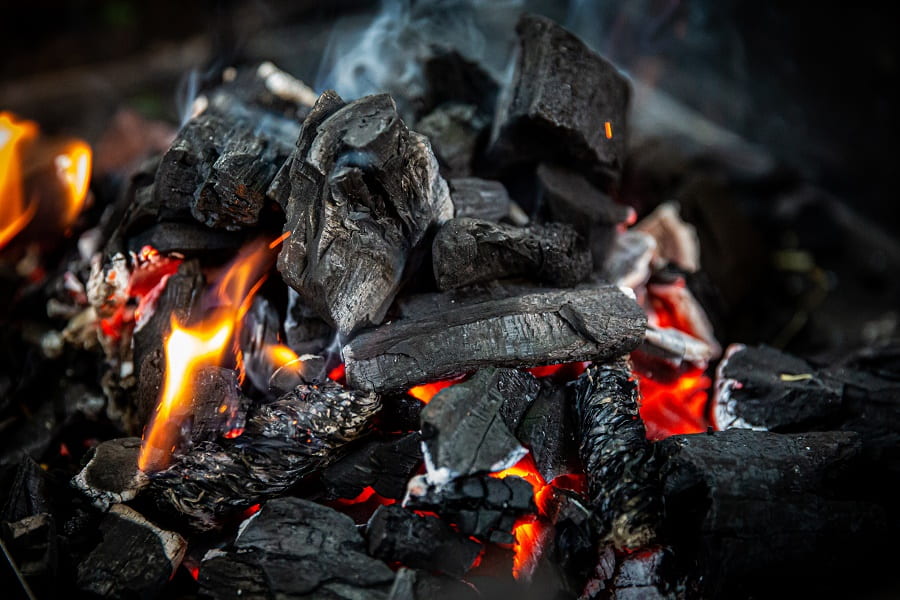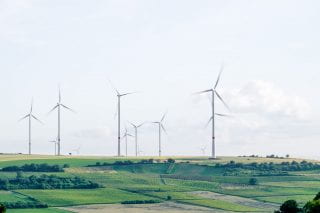Say the words “fossil fuel” to most environmentally conscious people and you will conjure up images of smoggy air, oil spills, and melting ice caps.
Fossil fuels, including coal, petroleum, and natural gas, are the go-to boogeyman of the green movement—and with good reason. They are known to release large amounts of greenhouse gases when burned for energy—leading to our dangerously changing climate. Additionally, the methods used to access these fuel sources (think fracking, tar sands, extensive mining) can be significantly damaging to the environment.
In short, civilization’s addiction to fossil fuels is trashing and poisoning our planet.
 You may wonder, if all this is true, if burning fossil fuels really is damaging life on earth, then why are we still using them as the main source of our energy in most of the world? Although both the problems of fossil fuels and the benefits of “green” energy have been known for decades, our global consumption of energy has only increased, and we continue to get roughly 80% of our energy from fossil fuels.
You may wonder, if all this is true, if burning fossil fuels really is damaging life on earth, then why are we still using them as the main source of our energy in most of the world? Although both the problems of fossil fuels and the benefits of “green” energy have been known for decades, our global consumption of energy has only increased, and we continue to get roughly 80% of our energy from fossil fuels.
What is going on?
This question sent me on a quest to understand the state of energy on Earth.
To start off my journey, I first sought to understand these fossil fuels. My research led me to a few characteristics that heavily contribute to our reluctance to drop them.
Here are the 3 reasons we are still using fossil fuels
1. EFFICIENCY: They are excellent as fuels
With all the talk about how awful fossil fuels are, one relevant fact is almost invariably forgotten. Fossil fuels are fantastic at their job; that is, producing energy. Earth’s fossil fuel reserves were formed over millions of years as the organic material of ancient plants and microorganisms (not dinosaurs) were compressed and heated into dense deposits of carbon—basically reservoirs of condensed energy. For this reason fossil fuels are incredibly “energy dense“, meaning a little bit of a fossil fuel can produce a whole lot of energy. This energy dense quality is what led to Europe’s adoption of coal over wood as a fuel source, and this sudden increase in available energy eventually led to the industrial revolution. Coal, oil, and natural gas seem to exist to be fuels.
2. CONVENIENCE: They are ready-made
As mentioned above, fossil fuels are the result of natural processes of millions of years. While it took a looong time to turn trees and ferns into coal, those millions of years have already passed and we have nothing to do now but reap the rewards of eons. To unlock most alternative fuels (think solar, geothermal, wind, etc…) we first have to figure out how to efficiently collect, transform, and store the energy before we can even begin to think about using it. Fossil fuels, on the other hand, require no such innovation.
The work of collecting and storing the energy in fossil fuels has already been accomplished, and all that’s now needed to access the abundant energy reservoir is the technology of fire. And humans have known about fire for a lot longer than we’ve known about photovoltaics.
This “ready-made” quality of fossil fuels also means that we can access their energy anywhere, anytime. Unlike solar power which is dependent on cooperative weather and hampered by things like night, fossil fuels can be used anywhere the appropriate infrastructure exists, regardless of time, weather, or even geographical location. Very few alternative energy sources can compete with fossil fuels when it comes to producing power “on-demand.”
3. LOGISTICS: They are well-established
The last aspect of fossil fuels that makes them so hard to abandon is the fact that they have been the main source energy in much of the world for the past two centuries. Two centuries may not seem like such a long time in the grand scheme of things, but this particular set of 200 years was a bit more remarkable than most—it contained the industrial revolution.
The industrial revolution (which I already mentioned was made possible by coal) and the modern world it resulted in changed the way humans do everything. Seriously. Everything from what we eat, to where we work, to what we wear, to how we get around. Think about it the device you are using to read this blog. Think about the electricity that powers your home and refrigerator. Most—if not every part—of our lives is completely dependent and intertwined with the energy provided by fossil fuels.
Since fossil fuels have been the dominate source of our energy during the entirety of the development of the modern, industrialized world, all our systems—from production to infrastructure to transportation to residential—are set up for their use. Switching to another energy source would mean completely rethinking the way we live and the way we understand energy.
 Will we ever be able to stop using fossil fuels?
Will we ever be able to stop using fossil fuels?
My research into fossil fuels showed me that the problem of fuel is a tad more complicated that I initially understood. For an alternative energy source to be a viable substitution, it must be able to match fossil fuels in their efficiency as fuels, the accessibility of their energy, and their integration into society. Fossil fuels, and their use over the last 200 years, have left some pretty enormous shoes to fill and – as they currently stand – no alternative source is up to the task. It is going to take some more Research and Development, perhaps funded by a carbon tax, to get one—or several—new sources of energy up to a sufficient level of production to replace the “dinosaur” fuels.
Despite the difficulty, though, it must be done. We simply cannot go on burning fossil fuels with no thought to the consequences. Fossil fuels are undeniably excellent fuels, but the negative externalities of their use—their harm to human health, the environment, and society—far outweigh any benefit of continuing their use.
Want to learn more about alternative energy? Click here
Want to learn more about fossil fuels? Watch this
Want to learn more about how coal use shaped our world? Read this awesome book
Want to learn more about differnet fuels? Click here
Did you enjoy this post? Please share it with your friends!
Originally Published July 2016

